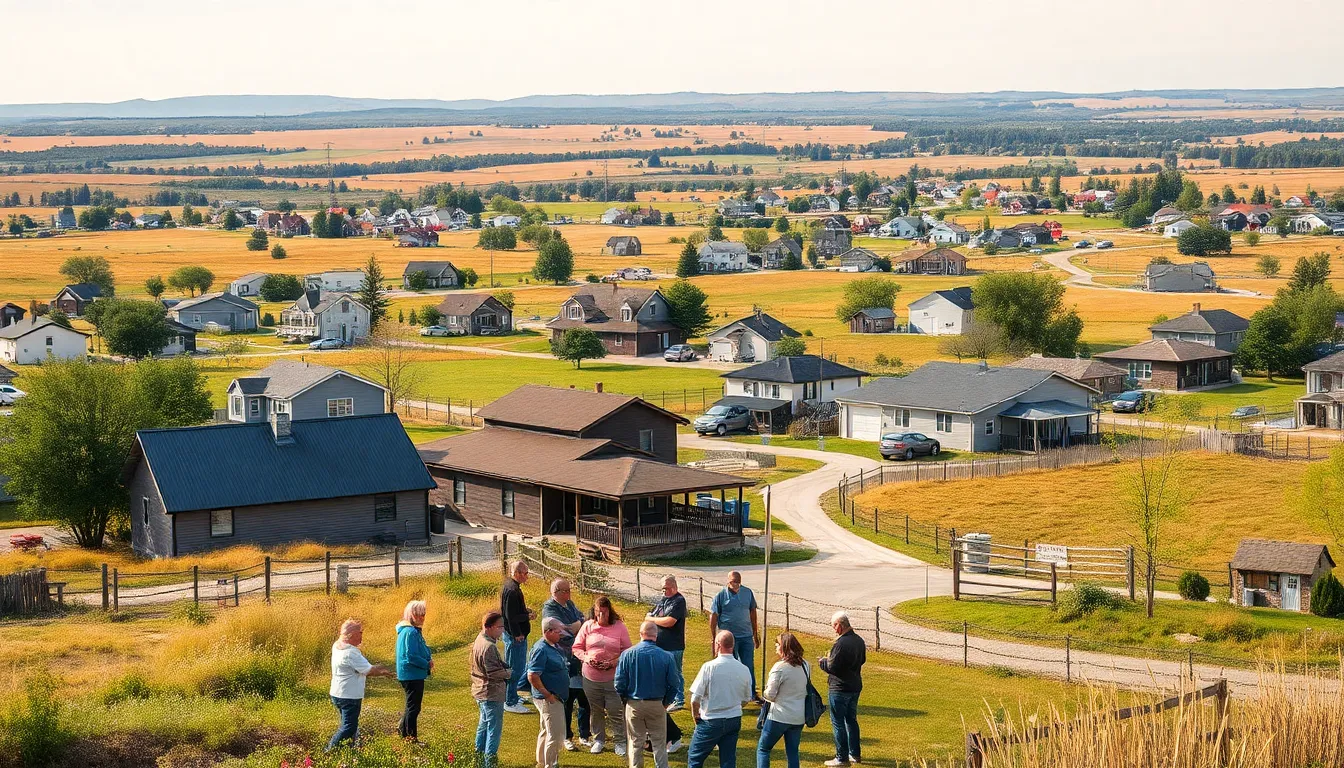In the landscape of American geography, unincorporated towns hold a unique place. These communities, not officially recognized as municipalities, often thrive outside the constraints of city governance. This lack of incorporation can lead to a distinct lifestyle, where residents enjoy more autonomy but may also face challenges in accessing certain services.
Understanding what an unincorporated town is reveals much about local governance and community dynamics. While they may not have a formal city structure, these towns often boast rich histories and tight-knit communities. Exploring their characteristics sheds light on how they function and the implications for those who choose to call them home.
Table of Contents
ToggleOverview of Unincorporated Towns
Unincorporated towns represent communities not officially designated as separate municipalities. Residents enjoy a level of autonomy not found in incorporated areas, as local governance operates less formally. These towns often lack a city council, mayor, or formal governmental structure, leading to various advantages and limitations.
Characteristics of Unincorporated Towns
- Limited Governance: Unincorporated towns do not have the same bureaucratic systems as incorporated cities. This absence allows for more flexible regulations and fewer administrative requirements.
- Community Formation: Residents typically form close-knit communities with strong social ties. Social gatherings and local events foster a sense of belonging among residents.
- Access to Resources: Unincorporated towns may struggle with limited access to public utilities and services, including police, fire protection, and road maintenance. Residents often rely on county services or volunteer organizations for support.
Historical Context
Unincorporated towns often possess rich histories tied to the development of rural America. Many originated as mining camps, farming communities, or trading posts. Over the years, these towns preserved cultural traditions and historical landmarks, showcasing their unique heritage.
Challenges of Living in Unincorporated Towns
- Service Limitations: Residents may face difficulties in accessing essential services, including healthcare and education, due to geographic isolation.
- Zoning Issues: Land use and zoning regulations can lead to discrepancies in property rights and development opportunities. Residents may encounter challenges when pursuing construction or modification projects.
- Political Representation: Unincorporated areas often lack political representation. Decisions affecting local communities are typically made at the county level, which may not reflect the specific needs of these towns.
Understanding the dynamics of unincorporated towns highlights their significance in the wider landscape of American communities. The blend of autonomy, rich history, and unique challenges shapes the everyday lives of residents in these areas.
Characteristics of Unincorporated Towns

Unincorporated towns possess distinct traits that set them apart from incorporated areas, shaping the experiences of their residents. These characteristics include a lack of formal governance and specific challenges regarding community services and infrastructure.
Lack of Formal Government
Unincorporated towns lack a formal governing body, leading to fewer regulations and a more flexible administrative environment. Residents often engage with county governments for essential services and local governance issues. The absence of city-specific rules allows for varied land use practices, fostering unique community arrangements. However, this lack of a structured government results in limited political representation, with decisions commonly made at the county level rather than through local input. Consequently, residents must navigate a complex relationship with county officials for addressing issues that directly impact their community.
Community Services and Infrastructure
Community services in unincorporated towns often depend on county resources and volunteer organizations, which can limit access to essential utilities. Many residents experience challenges related to public services such as water supply, waste management, and emergency response. Infrastructure developments, like roads and healthcare facilities, may rely on infrequent county investment, impacting overall community well-being. Residents frequently form strong alliances, organizing events to support each other and fill gaps in services. This collaborative spirit helps maintain a sense of community, even amidst infrastructural limitations.
Comparison with Incorporated Towns
Unincorporated towns differ significantly from incorporated towns in various aspects, particularly regarding legal status, recognition, and governance structures.
Legal Status and Recognition
Incorporated towns possess official legal status and recognition from state governments, granting them specific rights and responsibilities. These towns operate under a charter and have defined geographic boundaries. Unincorporated towns, however, lack such formal recognition, which results in limited legal standing and fewer rights. Residents in unincorporated areas must navigate various state and county laws without the protections afforded by incorporation. Consequently, unincorporated towns typically engage with county jurisdictions for governance and resource allocation.
Governance Structures
Incorporated towns have established governance structures, including elected officials such as mayors and city councils, facilitating decision-making and resource management. These structures enable incorporated towns to implement local ordinances, zoning laws, and public services efficiently. In contrast, unincorporated towns lack formal governance, often relying on county provisions for essential services. This means that residents face limited direct political representation, resulting in a dependence on broader county policies that may not reflect local interests. Additionally, community members in unincorporated towns often engage informally to address shared concerns, fostering strong social ties that can compensate for the absence of formal governance.
Examples of Unincorporated Towns
Unincorporated towns in the U.S. exhibit diverse characteristics and face unique challenges. Several notable examples highlight the variety of these communities across different states.
Notable Locations in the U.S.
- Noma, Florida: Known for its rural charm, Noma serves as a quiet retreat with a close-knit community atmosphere. Limited commercial development, however, affects residents’ access to services.
- Kirkland, Arizona: A small town established around the railroad, Kirkland showcases historic buildings and a strong agricultural heritage. The town’s rural location results in reliance on nearby cities for essential services.
- Ledyard, Connecticut: With a rich history and diverse natural landscapes, Ledyard remains unincorporated to maintain its rustic character. Residents enjoy tight community bonds but face challenges in educational resource access.
- Cedar Grove, North Carolina: Recognized for its scenic views and community events, Cedar Grove emphasizes local engagement. However, the lack of municipal services can complicate daily life for its residents.
Unique Features and Challenges
Unincorporated towns often share specific features and encounter challenges, setting them apart from their incorporated counterparts.
- Limited Governance: These towns operate with fewer regulations and administrative requirements, allowing for local autonomy in decision-making.
- Community Bonds: Social ties within unincorporated towns reinforce local identity through shared activities and traditions, contributing to a strong sense of belonging.
- Public Service Access: Residents frequently face limited access to essential services such as healthcare, education, and public utilities, often depending on county support for basic needs.
- Political Representation: The lack of municipal government means decisions affecting residents typically occur at the county level, limiting direct representation in local governance.
Each unincorporated town presents distinct character traits, yet they face common hurdles that shape the experiences of their residents.
Unincorporated towns play a vital role in the tapestry of American communities. Their unique status allows for a distinctive lifestyle that fosters strong social connections among residents. While these towns face challenges such as limited access to services and political representation, their rich histories and cultural heritage contribute to a sense of identity and belonging. Understanding the dynamics of unincorporated towns sheds light on the diverse experiences of those who call them home. As these communities continue to navigate their unique circumstances, they remain a testament to the resilience and spirit of local governance.


